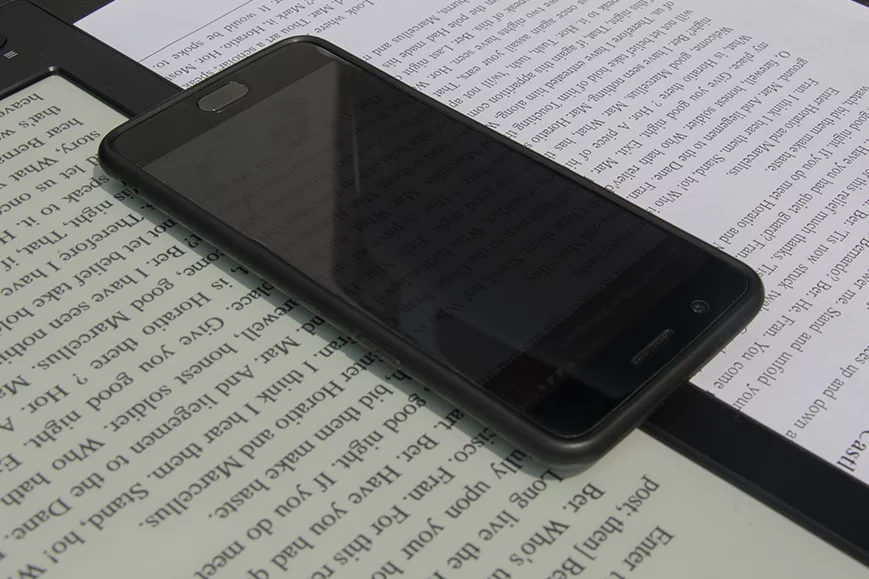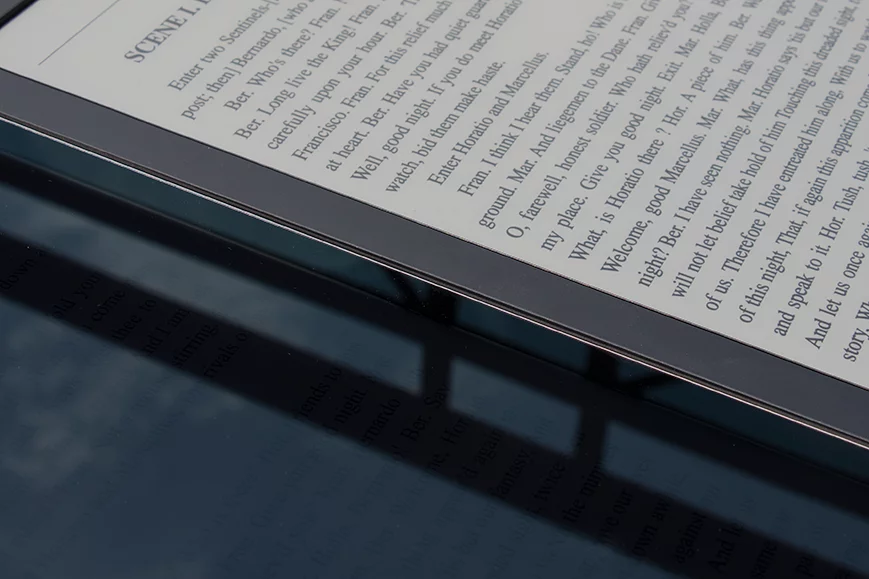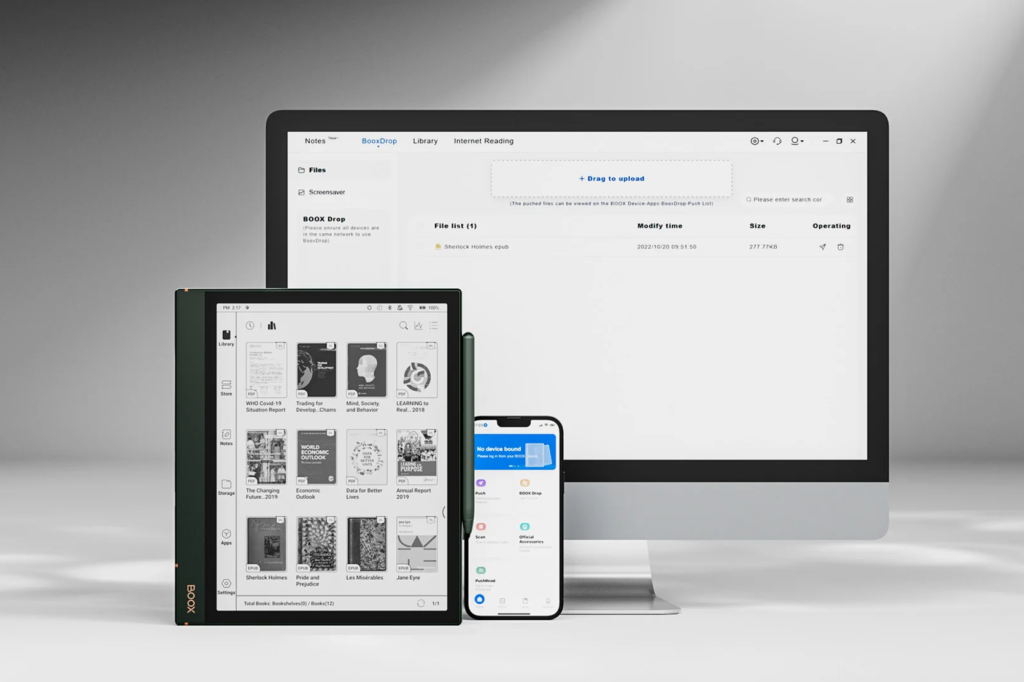In the world of digital displays, three main contenders have emerged, each vying for the attention of consumers: e-ink, LCD, and OLED. As technology continues to advance, the battle between these screen types has intensified, leaving many Canadians wondering which one will ultimately reign supreme. At Einktab, we’ve been closely following the developments in display technology, particularly as they relate to e-readers and tablets. In this blog post, we’ll dive into the pros and cons of each screen type, explore their unique features, and help you determine which one is the best fit for your needs.
E-Ink: The champion of eye comfort
When it comes to e-readers, e-ink screens have long been the preferred choice for avid readers. The secret behind E-Ink’s success lies in its ability to mimic the appearance of real paper. Unlike backlit screens, E-Ink displays rely on reflected light, which means they are easier on the eyes and cause less strain during prolonged reading sessions. This makes e-ink screens ideal for those who spend hours engrossed in their favourite books or documents. Einktab’s range of e-ink tablets, such as the popular Boox e-reader, harnesses the power of e-ink technology to provide Canadians with a comfortable and immersive reading experience. With their glare-free screens and adjustable front lights, E-Ink devices allow you to read in any lighting condition without putting undue stress on your eyes.



LCD: The Versatile All-Rounder
LCD (Liquid Crystal Display) screens have been a staple in the world of digital displays for decades. Smartphones, tablets, laptops, and televisions widely use them due to their versatility and cost-effectiveness. LCD screens offer several advantages, including vibrant colours, good brightness levels, and wide viewing angles. They are also capable of displaying fast-moving content, making them suitable for watching videos, playing games, and browsing the web. However, LCD screens do have some drawbacks when it comes to reading. LCD displays’ backlight can lead to eye strain and fatigue during prolonged reading sessions. Additionally, LCD screens are prone to glare, which can make reading in bright environments a challenge.
OLED: High Contrast, Mixed Comfort
OLED pixels emit their own light, producing deep blacks and strong contrast without a backlight. This can reduce glare compared to LCD, but the high brightness and contrast may still cause fatigue for some readers, especially over long sessions. Blue light from OLED can disrupt sleep, even at low brightness, though warm-tone modes help for some users. Outdoor readability remains weaker than e-ink due to reflections. Many people tolerate OLED for extended use, but others notice strain quickly—preference is highly individual.
E-Ink: The Reader's Choice
For dedicated e-reader devices, e-ink screens remain the top choice for Canadian bookworms. The benefits of e-ink displays align perfectly with the needs of avid readers. Firstly, e-ink screens are incredibly energy-efficient, allowing e-readers to last for weeks on a single charge. This means you can take your device on long trips or outdoor adventures without worrying about running out of power. Secondly, the design of e-ink screens minimizes eye strain, making them perfect for extended reading sessions. The matte finish of E-Ink displays reduces glare, ensuring that you can read comfortably even in bright sunlight. Einktab’s collection of e-ink tablets, including the Boox e-reader, offers a range of screen sizes and resolutions to suit every reader’s preferences.
Choosing the Right Screen for Your Needs
When it comes to selecting the best screen type for your needs, it ultimately depends on your primary use case. If you’re an avid reader who spends hours immersed in e-books and documents, an E-Ink device like the Boox e-reader from Einktab is likely the best choice for you. E-ink screens offer unparalleled comfort, energy efficiency, and readability, making them the ideal companion for bookworms. If you’re looking for a more versatile device that can handle a wide range of tasks, including reading, multimedia consumption, and productivity, an LCD or OLED screen may be more suitable. LCD screens offer a good balance between performance and affordability, while OLED screens deliver top-notch visuals at a premium price point.
The future of display technology
As technology continues to evolve, the battle between e-ink, LCD, and OLED screens is far from over. Each display type is constantly improving, with manufacturers working to enhance their strengths and address their weaknesses. E-ink screens are becoming more advanced in the realm of e-readers, with higher resolutions, faster refresh rates, and even color options. Einktab is at the forefront of this innovation, offering cutting-edge e-ink tablets that combine the best of e-ink technology with user-friendly features and sleek designs. Meanwhile, LCD and OLED screens are also pushing the boundaries of what’s possible. Higher refresh rates, improved colour accuracy, and enhanced power efficiency are just some of the advancements we can expect to see in the coming years.
Conclusion
E-ink remains the most comfortable option for long reading, particularly in bright light or before sleep. OLED and LCD offer better color and motion handling but are less consistent in comfort. A practical approach is to pair an e-ink device for reading with an OLED or LCD tablet for video and apps. Choosing comes down to your tolerance for screen light, your reading environment, and whether you prefer a single device or a two-device setup.
To stay up-to-date with the latest trends in display technology, e-readers, and tablets, be sure to follow Einktab on Facebook.
FAQ
For short reading sessions, many users find OLED acceptable, especially with warm-tone modes. For multi-hour reading, e-ink is generally easier on the eyes.
No. Filters reduce blue light, but some people still experience delayed sleep if using OLED or LCD devices before bed.
Yes, for direct sunlight. OLED and LCD can reach higher brightness, but reflections and glare still make them less readable outside.
Factors include brightness levels, screen contrast, refresh rate sensitivity, and personal visual health. Comfort is subjective.
If you read a lot and also watch videos or browse, two devices—an e-ink reader and a tablet—offer the best mix of comfort and versatility.


